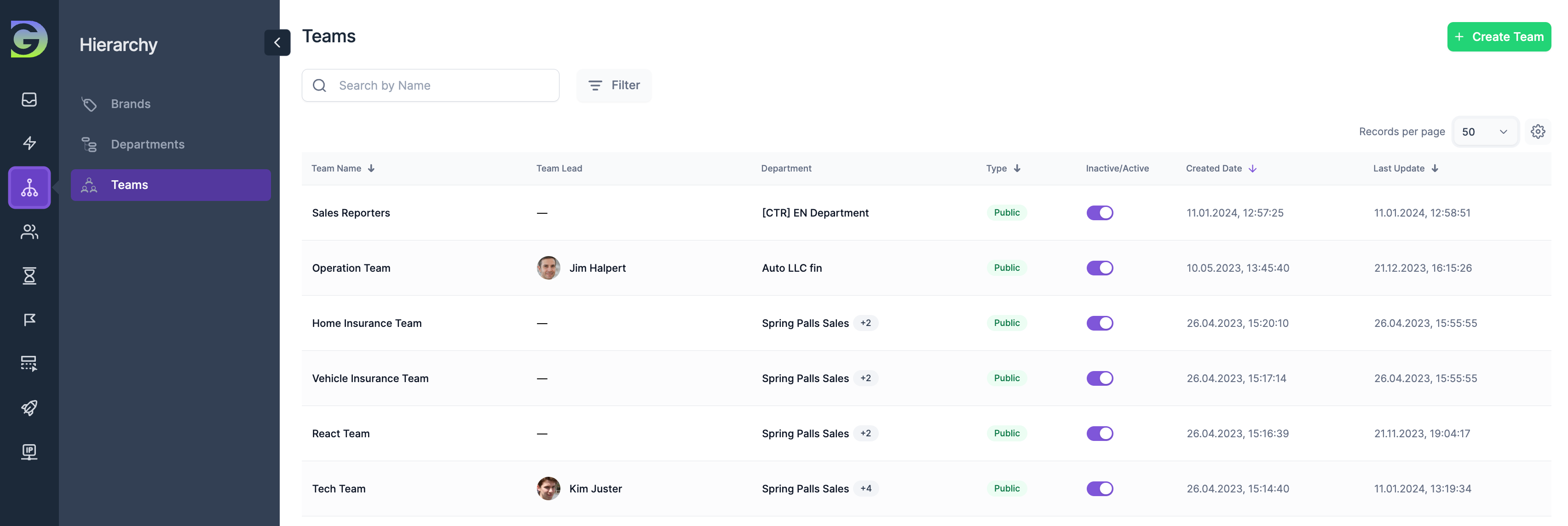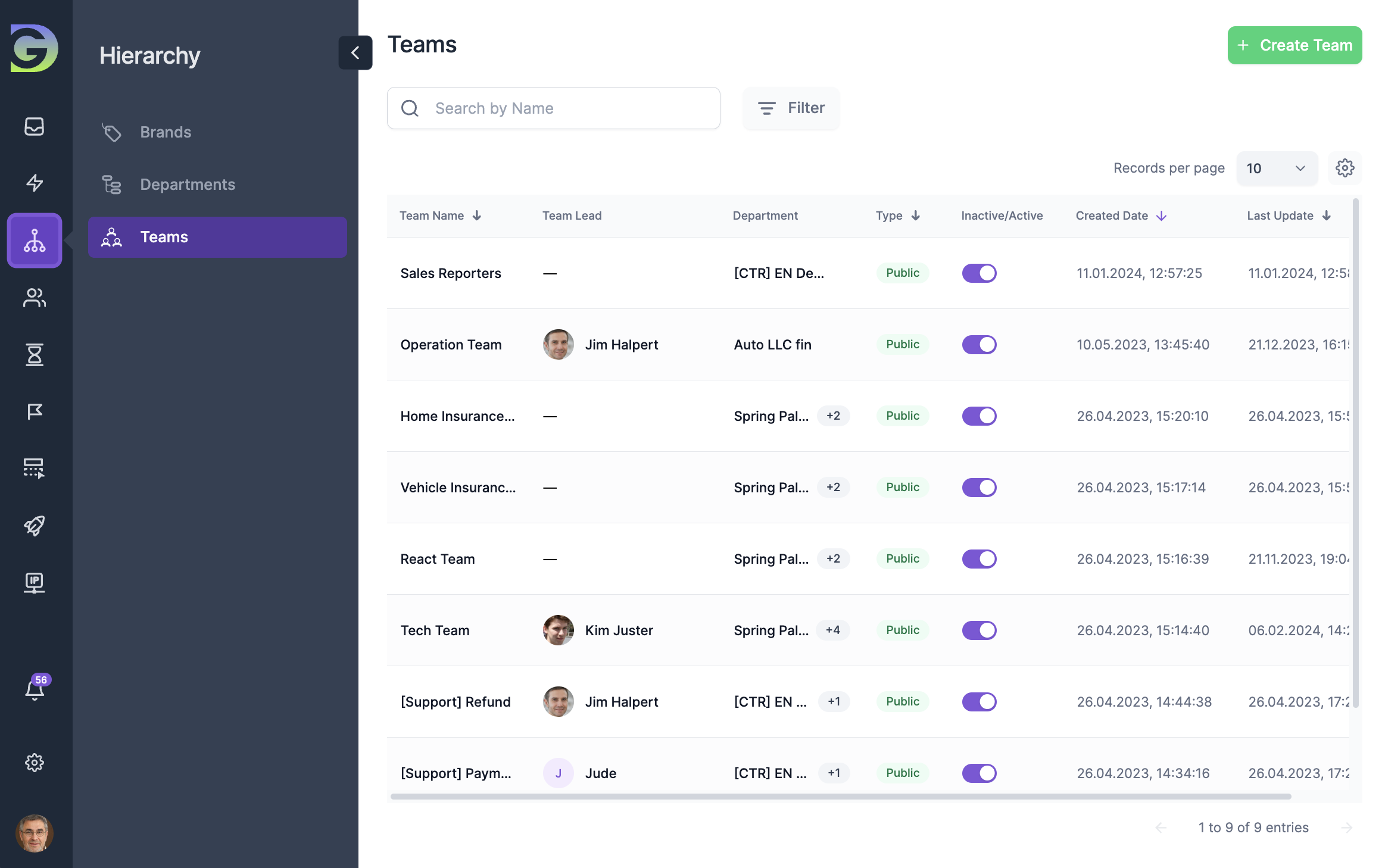Hierarchy is designed to organize and manage tickets, as well as the personnel tasked with handling them. This system is essential for maintaining order and efficiency in processing requests. It consists of three key components: Brand, Department, and Team, each with distinct roles and structures.

Brand
• Foundation: The Brand forms the base of the hierarchy. It is the primary organizational unit under which Departments are categorized.
• Management: Each Brand may have a dedicated manager or a team of managers, responsible for overseeing the operations within the Brand. This level of leadership ensures that the Brand's objectives are met and that its operations align with the overarching goals.
• Role: Brand managers play a crucial role in maintaining the integrity and efficiency of the Brand, setting the tone for the Departments that fall under it.
Department
• Function: Departments are specialized units within the Brand, each focusing on specific operational areas or expertise.
• Leadership: Departments may have their own manager or a team of managers who are responsible for guiding the Department's activities and aligning them with the Brand's strategy.
• Purpose: Department managers are essential for ensuring that their teams are effective, goal-oriented, and cohesive in contributing to the Brand’s success.
Team
• Objective: Teams are established to streamline the handling of tickets. They are the operational units that directly deal with ticket delegation and resolution.
• Structure: Each Team may have one or more Team Leads who manage the team's day-to-day operations. Teams can be public or private, affecting the visibility and management of tickets within the team.
○ Public Teams: All tickets are accessible to every team member. This setup is ideal for fostering a collaborative environment where everyone can contribute to problem-solving.
○ Private Teams: In this setting, visibility is limited. Unassigned tickets are only visible to managers or designated individuals, providing a focused approach for handling specific issues.
• Responsibility: Team Leads are pivotal in managing workflows, delegating tickets, and ensuring that the team effectively addresses and resolves issues.

Conclusion
In summary, the Hierarchy in Grogu Desk is an essential framework that streamlines ticket management and ensures efficient resolution. It clearly defines roles and responsibilities across Brands, Departments, and Teams, facilitating a coordinated and effective approach to handling tickets. This structure not only speeds up the ticket resolution process but also enhances the overall quality of service. Implementing a hierarchical approach in ticketing systems is key for organizations aiming to optimize customer service and operational efficiency.



